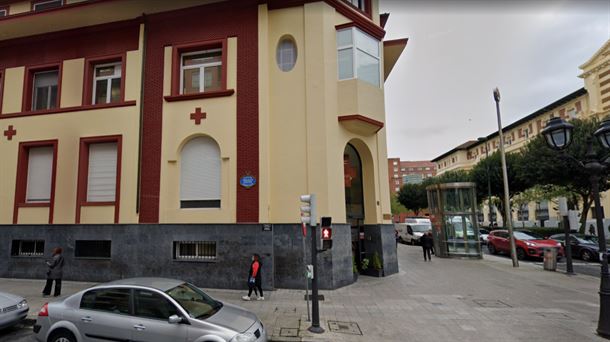Russian leader warns of risk of catastrophe from Ukrainian offensive as his cabinet justifies having troops at the factory to prevent a “Chernobyl scenario”
Vladimir Putin is ready to accept an IAEA mission to the Zaporizhzhya nuclear power plant “as soon as possible”. This was relayed by the Russian president to his French counterpart Emmanuel Macron yesterday during a telephone conversation in which the Kremlin head expressed his apparent concern about the “catastrophe risk” posed at the factory from Ukrainian bombing, according to what he denounced. .
The expedition of the experts from the International Atomic Energy Agency has not yet set a date, but the Russian representative in Vienna, where the agency is headquartered, believed that they could already travel in a two-week period and assess the secondary damage through the facilities after several days of military confrontation. “The forecasts are not always fulfilled, but we can talk about the first days of September unless factors unrelated to the objectives resurface,” the deputy, Mijail Ulianov, told the Tass agency.
Ulianov referred to previous attempts by the IAEA to inspect the site, which were ultimately unsuccessful. In March, after Russia took control, he wanted to review compliance with security protocols already ‘in situ’. In June, it was Energoatom, the Ukrainian state-owned company, that refused a visit because “it would legitimize the sustainability of the residents”. However, then Zaporizhzhya was not the kind of atomic bomb that both sides have turned into.
IAEA technicians describe what is happening in the facilities as “very alarming”. And the uncertainty of the past 24 hours does not diminish that feeling: if this chronicle is not outdated, it is because during the early morning hours the announcement by the Ukrainian army that the Russians are installing a “major attack” in the factory itself for the sole purpose of holding them accountable, nor the Kremlin’s prediction of a “large-scale” night offensive by Kiev to recapture the facilities. Much of the alarm was caused by Moscow giving its nuclear technicians a day off. In the West, reports from both armies, which have sounded exaggerated as a previous justification for exonerating themselves in the event of armed actions with unpredictable consequences, have kept it sharp.
The Elysee reported that the French president had communicated to his counterpart “concern about the risks posed by the situation at the nuclear power plant” and specified that the experts should conduct their investigation “under conditions agreed upon by Ukraine and the United Nations”. The Kremlin, for its part, stressed that the two leaders agreed to request an inspection “as soon as possible”. According to Putin, “the systematic bombing by the Ukrainian army creates the risk of a major catastrophe.”
This Friday was a cramped day. The increase in atomic voltage was accompanied by the distribution of a video showing several Russian military vehicles next to the turbine of one of the six reactors. The images are undated, but they were enough for the Kiev government and several international institutions to denounce the presence of military equipment in a highly complex facility. European Energy Commissioner Kadri Simson criticized the “irresponsible” behavior of the Russian troops, adding on behalf of the European Commission that this contingent “must leave and allow the Ukrainian authorities to work safely”.
The Kremlin’s response was immediate: the military presence revealed in the video represents a guarantee against a “Chernobyl scenario”—referring to the 1986 nuclear disaster—and the demilitarization of the area would only “lead to a future increase in threats,” assured Russian State Secretary for Foreign Affairs Sergei Ryabkov.
For his part, UN Secretary-General Antonio Guterres, who visited Odessa this Friday, called on Moscow not to disconnect the nuclear power plant from Ukraine’s power grid and demanded that the two governments at war end hostilities in Zaporizhia because they are headed for “suicide” .”
Russia on Friday carried out new bombings in the Kharkiv region, northeast of Ukraine. According to local newspaper The Kyiv Independent, which quoted the city’s mayor, Igor Terejov, Russian troops bombed at least three districts of the city shortly before 6 a.m. (one hour less in Spain). At least one person was killed and another injured in the attacks on several residential areas.
In addition, during the night from Wednesday to Thursday, the death toll rose to 21 in the attack by Kremlin troops in the same region. This was confirmed by the Kharkov prosecutor’s office. His spokesman, Dimitro Chubenko, revealed the finding of 15 more bodies in the rubble of a residential building in the Saltivski district. According to London, Russia continues to bomb this region, where no significant progress has been made, to prevent Ukrainian soldiers from being deployed in other areas.
On the other hand, two Russian cities were evacuated because of a fire at an ammunition depot near the town of Timonovo, near the border with Ukraine. Russian forces also shot down a drone near the airport in Sevastopol, the main city in Crimea and the base of the Moscow Black Sea fleet. It is the fourth attack by Kiev on the peninsula in just a month.
In fact, the 9th bombing of Russia’s Saky Air Base may have “decommissioned” more than half of the Russian Navy’s jet fighter fleet in the Black Sea, Reuters estimated on Friday. country.
Source: La Verdad
I am an experienced and passionate journalist with a strong track record in news website reporting. I specialize in technology coverage, breaking stories on the latest developments and trends from around the world. Working for Today Times Live has given me the opportunity to write thought-provoking pieces that have caught the attention of many readers.



